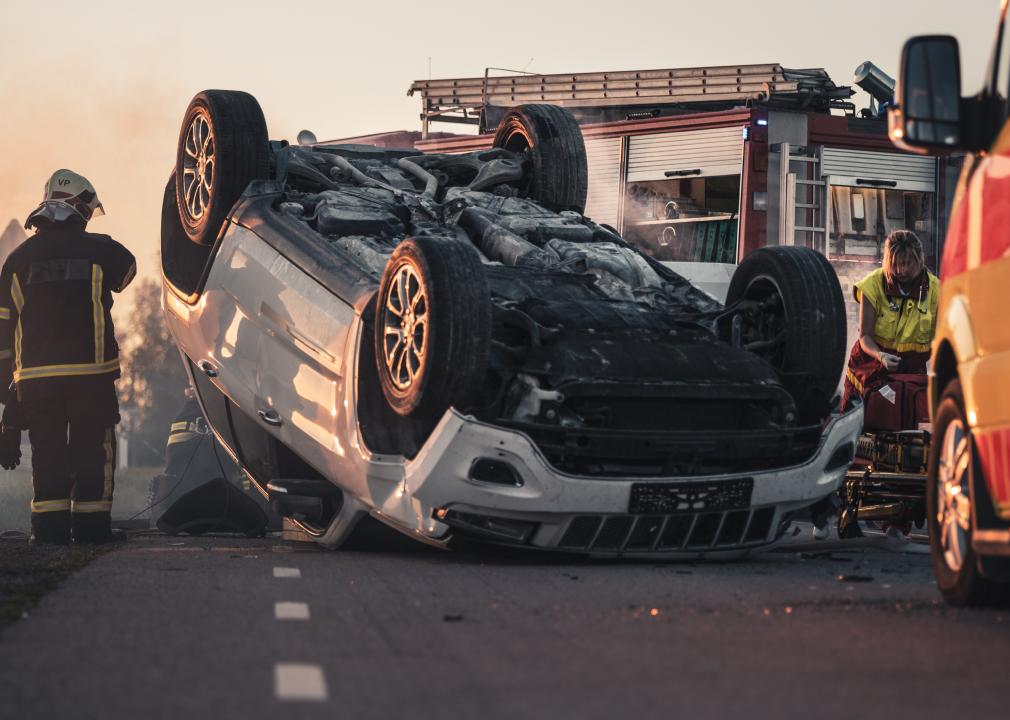Common conditions that can affect driver safety
Gorodenkoff // Shutterstock
Common conditions that can affect driver safety
Daytime crash scene with damaged car and first responders.
Be it wet pavement, fog, snow, or rain, nearly 1 in 5 crashes on American roads are weather-related.
CheapInsurance.com analyzed statistics from the National Highway Traffic Safety Administration and the Bureau of Transportation Statistics to illustrate the most common factors that threaten driver safety on the road.
Driving is one of the most dangerous activities a human will perform in their lifetime. In fact, weather-related vehicle crashes kill more people in the United States each year than any singular severe weather event like tornadoes or hurricanes.
Though society seems to have become strangely numb to the worst possible outcomes, death and disability, each of us rolls the dice every time we get behind the wheel. But there are actions we can take to lower the chances that we and our passengers do not become a part of the nearly 6 million vehicle crashes that occur each year.
We can lower our speed, use our headlights responsibly, pull over when conditions are severe enough, and even avoid heading out on the road altogether. We can also educate ourselves about the conditions to watch for and their risks.
So continue reading to become better informed about how different conditions like weather, speed, and time of the week are related to your safety on the road.
![]()
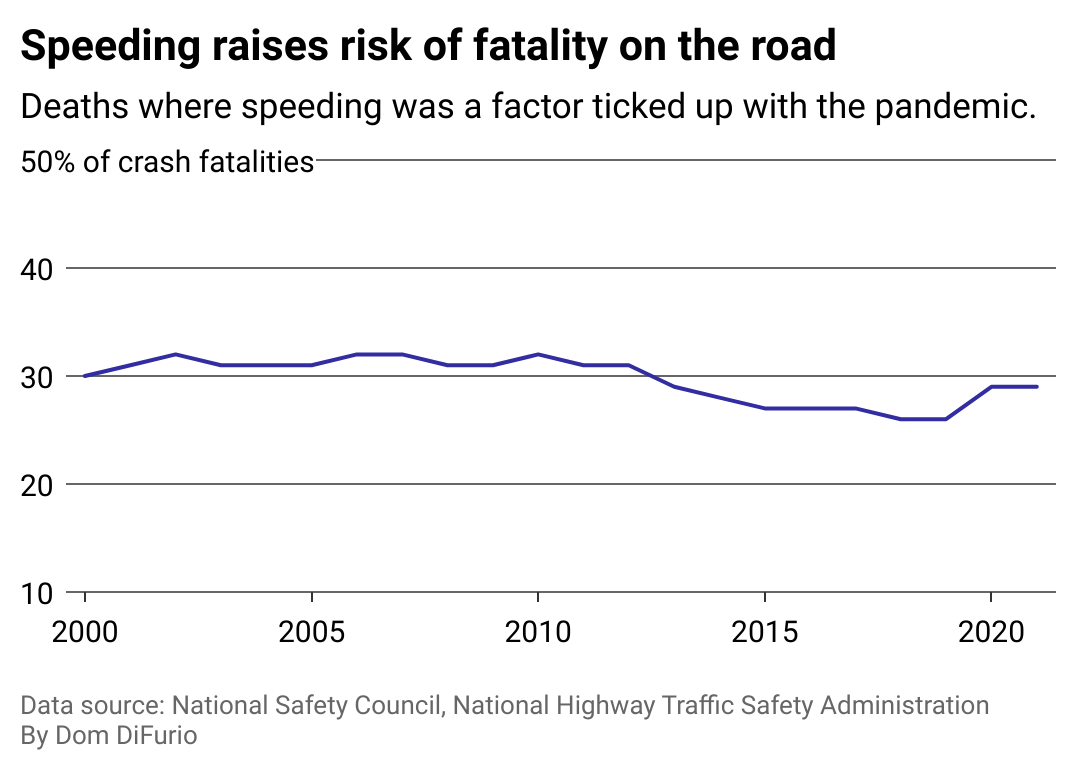
CheapInsurance.com
Speeding is a factor in nearly 1 in 5 car crashes that result in death
A line graph showing vehicle crash fatalities each year that include speeding as a factor from 2000-2021 with a trend line for each day of the week. In 2021, 29% of crash fatalities included speeding as a factor.
Until several years ago, there had been a welcome decline in fatal crashes involving speeding. The abnormal absence of traffic congestion on U.S. roadways in 2020 and into 2021 led some drivers to push the limits of how fast they could get from point A to point B—with deadly results.
Even when driving at or near the posted speed limit on a road or highway, it’s important to remember that adverse conditions like weather and visibility may mean the safest speed to travel is even lower than what is posted.
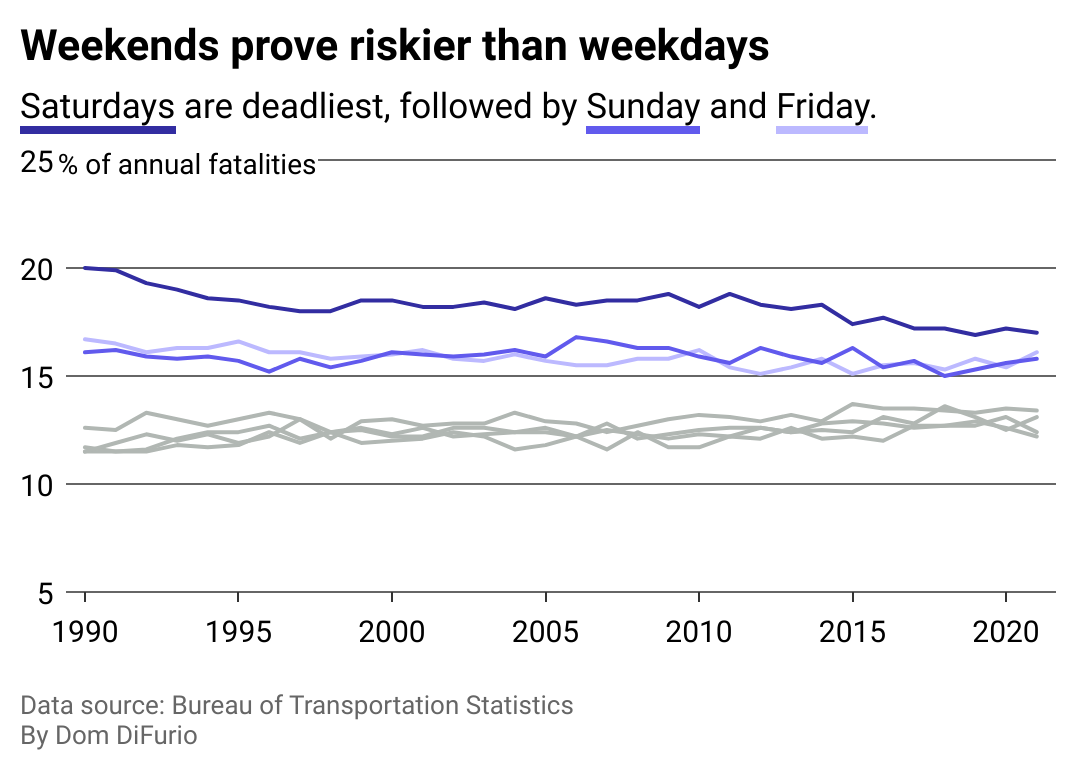
CheapInsurance.com
Half of all fatal crashes happen on just 3 days of the week
A line graph showing vehicle crash fatalities each year from 1990-2021 with a trend line for each day of the week. Saturday accounts for 17% of all fatal wrecks today followed closely by Friday and Sunday.
About half of all crashes that result in death happen on the weekends, from Friday to Sunday, compared with the rest of the week.
This may not come as a surprise considering that much of Americans’ workweek commutes are defined by their income-earning activities, as opposed to leisure, which is mostly saved for the weekends. It’s a trend that’s held for decades, regardless of the fluctuations in fatal crashes. And throughout the week, fatal crashes are more likely to happen between 3 p.m. and 3 a.m., no matter the day.
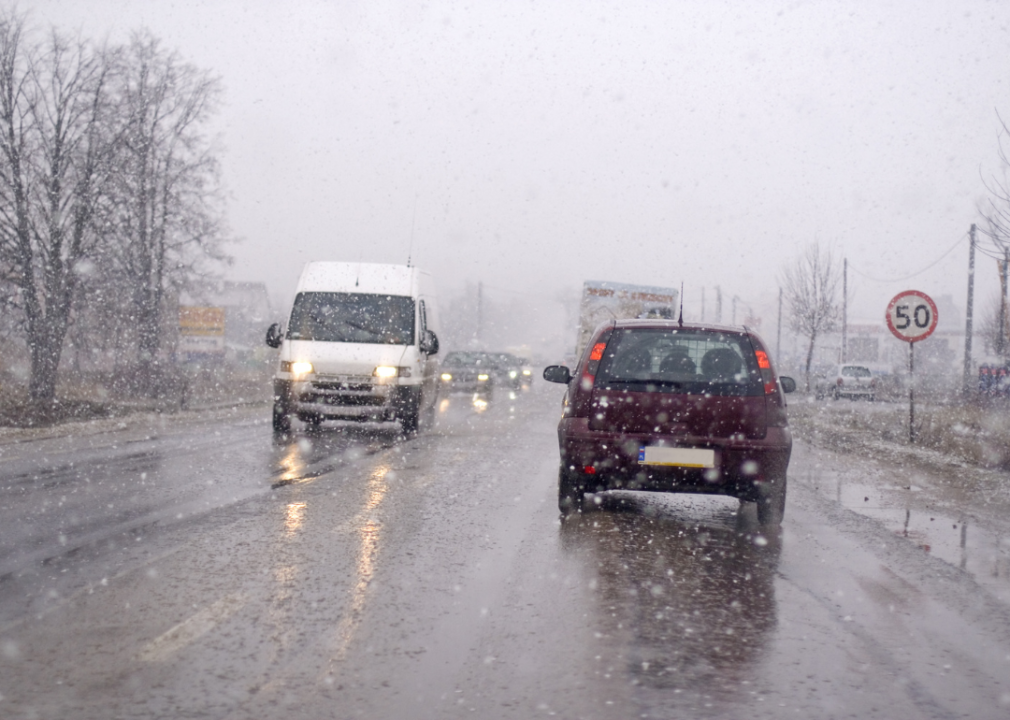
Canva
The vast majority of weather-related crashes involve wet pavement
Windshield view of car driving through snowy and rainy weather.
Wet pavement is a factor in about 7 in 10 weather-related crashes, according to 10-year averages of NHTSA data. Wet pavement can coincide with other conditions like snow, sleet, or rain. Ice and so-called “black ice” can also form when the pavement is wet and conditions are cold. It’s usually a good idea to slow down in areas where you notice wet pavement so that it’s easier to maintain control of the vehicle.
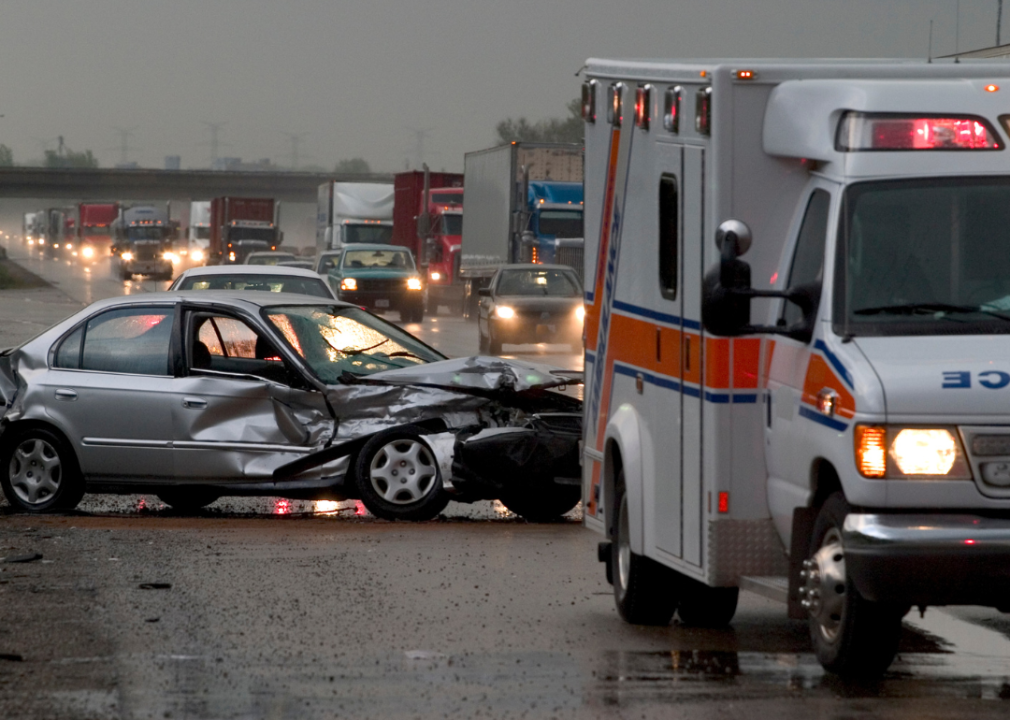
Canva
Rain is related to more than twice as many vehicle crashes than snow
Car smashed on the side of the highway during rainy day.
Rainy weather is related to 1 in 10 vehicle crashes compared with snow and sleet, which are related to 4%, according to NHTSA statistics. Rain also contributes to the most significant traffic delays. This could be partly influenced by the fact that most of the U.S. does not see regular snowfall in a typical year. Rain also occurs more frequently in the U.S. than snow. Light rain or snow can lead to as much as a 13% reduction in speeds on freeways, according to the Department of Transportation.
Story editing by Ashleigh Graf. Copy editing by Paris Close. Photo selection by Clarese Moller.
This story originally appeared on CheapInsurance.com and was produced and
distributed in partnership with Stacker Studio.
